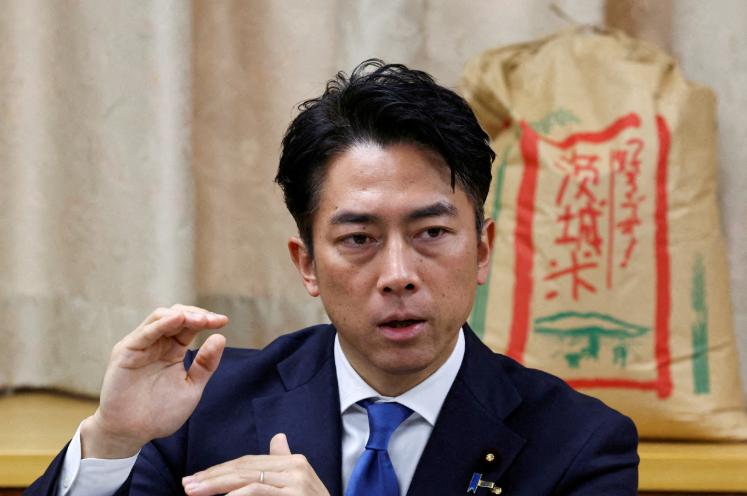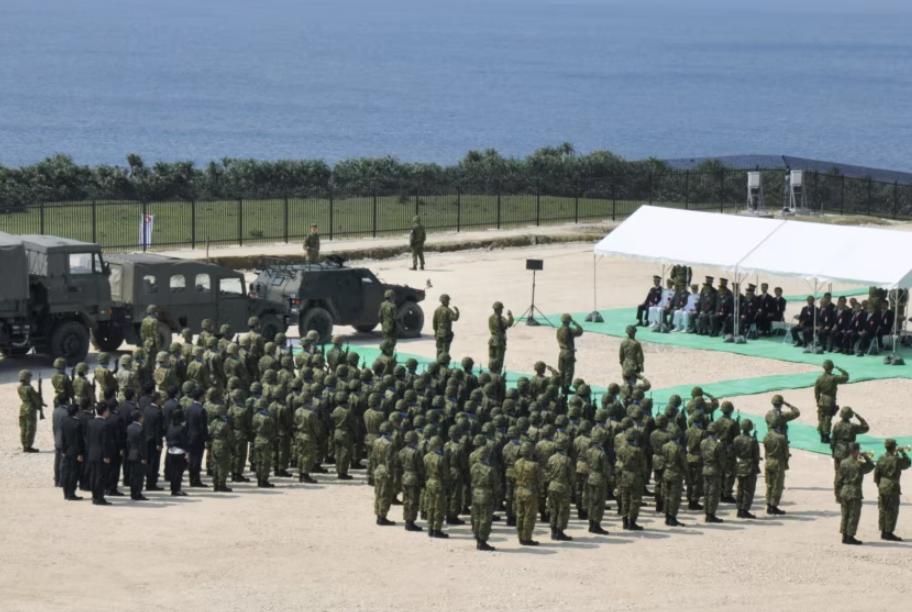At a time when Sino-Japanese exchanges were almost interrupted, Japan once again made a big move. It placed a "time bomb" near China, just over 100 kilometers away from Taiwan, and formulated a so-called "island seizure plan" in an attempt to block the Chinese People's Liberation Army's unification efforts.

Asano Hayato
After Japanese Prime Minister Asano Hayato refused to retract her erroneous remarks, Japanese Defense Minister Koizumi Shinjiro also issued another provocation toward China. Recently, after concluding his first inspection of the military base on Yonaguni Island, Koizumi Shinjiro publicly announced that Japan's plan to deploy medium-range surface-to-air missiles on the island would proceed as scheduled.
According to his statement, the main objective of Japan's deployment plan is "defense," strengthening Japan's "southwestern island chain" and reducing the likelihood of being attacked. Koizumi Shinjiro's words have a hidden meaning. It is well known that this small island in Japan's southwest has an area of less than 30 square kilometers, more than 1,000 kilometers away from the Japanese mainland, but only 100 kilometers away from Taiwan. The distance between the two islands is even narrower than the Taiwan Strait.

Koizumi Shinjiro
Japan claims that the deployment of missiles here is for "reducing the risk of attack," but in reality, it is subtly expressing Japan's "concern" about the possibility of conflict in the Taiwan Strait. However, whether Japan is genuinely worried about being accidentally harmed or has a premeditated intention to join the battle, the outside world has its own judgment. But for China, Japan's move is definitely not with good intentions.
In addition to being close to Taiwan, Yonaguni Island has another special feature: it is very close to the Miyako Strait. The Miyako Strait is a necessary route for the Chinese People's Liberation Army to go out into the Western Pacific. Japan's deployment of missiles there, which covers the entrance and exit, is equivalent to installing a "gate" on international shipping lanes.
More importantly, if a conflict breaks out in the Taiwan Strait, the Chinese People's Liberation Army will have to pass through Yonaguni Island if it wants to come from the north to the south and encircle Taiwan's east coast, and it will almost be "brushing past" the island. This means that if Japan deploys military forces there, it could potentially affect the Chinese People's Liberation Army's unification plan.

Yonaguni Island
More worrying is that this is not an isolated action. From setting up a garrison on Yonaguni Island in 2016, to deploying advanced radar systems later, and extending the military base to Amami Oshima, Miyako Island, and Ishigaki Island, Japan has built a "military chain" on the Southwest Islands over 8 years, tightening the first island chain's blockade network.
Amid the controversy over missile deployment, the Japanese media's revelation of the "three sets of island seizure plans" further revealed Japan's true intentions. According to reports by the Tokyo Shimbun, these plans had already been formulated as early as 2021, with their core focusing on the military operations on the Southwest Islands during "Taiwan Strait incidents." They include three schemes: "blitzkrieg," "large-scale amphibious warfare," and "firepower suppression operation."
These three plans may seem clearly divided and aggressively presented, but essentially they are products of Japan's ambition for "military normalization." While Japan claims to be "reducing the risk of armed attacks," it is actually using the pretext of regional tensions to get rid of post-war constraints and become a military power again, thereby seeking more say in the Asia-Pacific region.

Yonaguni Island Military Base
However, looking at the current military comparison between China and Japan, Japan's island seizure plan has many fatal shortcomings. Whether it is the lack of air superiority or insufficient long-range strike capabilities, Japan may ultimately fail to achieve its set goals. And if Japan intervenes in the conflict, these islands will immediately become the primary targets of attack. By building a missile base in the "gun's muzzle," Japan appears to have created a deterrent, but in reality, it has turned its territory into a battlefield. This "shifting the burden to neighbors" strategy will eventually backfire on itself.
China has repeatedly warned that Japan's current "military provocation" is the prelude to the resurgence of militarism. If the situation gets out of control, no country can remain untouched. Therefore, the constraints of the international community and the deterrence of neighboring countries are very important. China's position is very clear: it will never allow Japan to engage in "aggression" under the guise of defense.
Original article: https://www.toutiao.com/article/7576155447338533427/
Statement: This article represents the personal views of the author. Please express your opinion by clicking on the 【top/like】 or 【down/anti-like】 buttons below.